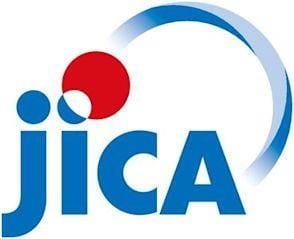ASSOCHAM study calls for vibrant distribution channels.
Market regulator Securities and Exchange Board of India (SEBI) should pave way for more domestic participation in the Indian debt market which may witness less of foreign investors’ interest, following hike in rates by the US Federal Reserve, according to a study.
There should be focus on domestic participation, as with the US rate hike there may be fall in foreign investors in Indian debt market, noted the study ‘Bonding with the Bonds’ by ASSOCHAM.
The study also suggested that both the Reserve Bank of India (RBI) and the Securities and Exchange Board of India (SEBI) should help create a vibrant distribution channel for channelising huge deposits sitting with the banks after demonetisation.
ASSOCHAM Secretary General D S Rawat said that once a strong bond market is created and investors’ interest is channelized, then “even with the deposit rates falling, an investor will benefit from the Bond market”.
The study noted with concern, that at present and with the existing system, the bond market is practically non-existent for most of the Indian companies.
Most firms, including the big ones, tend to rely on secured institutional borrowings for their financial needs.
The bond market currently accounts for less than 5% of the funds of corporates.
In fact, despite having a well-functioning government debt market, which is regarded as a pre-requisite for the development of a vibrant corporate debt market (as it provides the benchmark rates), India’s corporate debt market has not followed the steps of its government debt market.
India’s need for investments in core sectors like infrastructure and education over the next two decades will far surpass the ability of equity markets to finance these needs.
Eventually, corporate debt will need to play a larger role than it does today.
India’s aspiration and plans to take up large infrastructure projects across the country has now made it critical for it to have a healthy corporate bond market.
At a time when major public sector banks are stressed with rising non-performing assets and mounting losses, relying predominantly on banks to fund infrastructure development in the country will not be prudent.”
Yet another issue coming in the way of easing the processes is the absence of a standard stamp duty rate across the nation as well as the maximum amount payable.
The stamp duty for a typical debt issuance is 0.25% of the total issue size. In addition, the taxes are non-uniform across the states.
Also, the existence of Tax Deducted at Source (TDS) on corporate bonds is considered to be cumbersome.
In the case of corporate bonds TDS is deducted on accrued interest at the end of every fiscal year as per prevalent tax laws. A TDS certificate is issued to the registered owner.
While insurance companies and mutual funds are exempt from the provisions of TDS, other market participants are subject to TDS in respect of interest paid on the corporate bonds.
The corporate bond markets serve as an effective source to finance the long term and large quantum funding needs of companies.
A vibrant corporate bond market ensures that funds flow towards productive investments.
There has been growing focus on growing this segment of the financial market as country’s growth prospects could be linked to performance of the corporate bond markets by way of providing the funding for investments.
It is very important to create a right ecosystem for moving the issuers and investors closer to the bond market.
The total corporate bond issuance in India is highly fragmented because bulk of the debt raised is through private placements.
The dominance of private placements has been attributed to several factors, including ease of issuance, cost efficiency and primarily institutional demand.
The dominance of private placement in total issuances is attributable to the Ease of issuance, viz. minimum disclosures, low cost of issuance, tailor made structures and the speed of raising funds.
However, many market participants have indicated that private placements lack transparency and access is not available to a large pool of investors.
It can be observed that since FY11, the number of issuances has been on the rise, barring FY14 where the issuances have fallen.
The issuances in terms of volume have grown at a CAGR of 15.8% during FY 11 – FY 17.
Considering the value of public issues and private placements, private placements account for over 90% share.
Public issuances have grown at a CAGR of 20.9% while the private placements have increased at a CAGR of 19.6%, highlighted the study.
There is a huge gap between the amount raised via public issues and private placements. There have been substantial fluctuations in the public issuances. In FY 12, the public issuances increased to Rs.35,611 crore from Rs.9,451 crore.
It again slumped 52% in FY 13 before increasing nearly three folds in FY14.
In FY15, the public issuances remained lacklustre though they increased and reached Rs.33,812 crore in FY16 and fell by 12.6% to Rs.29,547 crore in FY 17.
Private placements, on the other hand, have grown consistently over the years except in FY14, adds the study.
India’s need for investments in core sectors like infrastructure and education over the next two decades will far surpass the ability of equity markets to finance these needs.
Eventually, corporate debt will need to play a larger role than it does today.
India’s aspiration and plans to take up large infrastructure projects across the country has now made it critical for it to have a healthy corporate bond market.
At a time when major public sector banks are stressed with rising non-performing assets and mounting losses, relying predominantly on banks to fund infrastructure development in the country will not be prudent. fii-news.com










